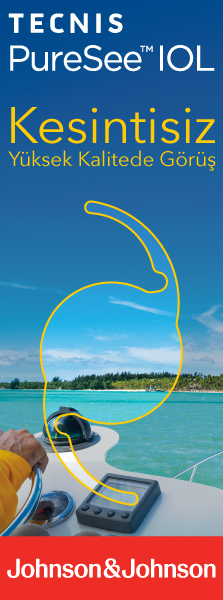2Sağlık Bilimleri Üniversitesi Sultangazi Haseki Eğitim Araştırma Hastanesi, Göz Kliniği, İstanbul, Türkiye
3Sağlık Bilimleri Üniversitesi Dr. Behçet Uz Çocuk Hastalıkları ve Cerrahisi Eğitim Araştırma Hastanesi Sağlık Uygulama Merkezi, Göz Kliniği, İstanbul, Türkiye DOI : 10.37844/TJ-CEO.2025.20.7 Objective: To compare intraocular pressure (IOP) measurements provided by the iCare rebound tonometer (RBT), non-contact tonometer (NCT) and Goldmann applanation tonometer (GAT) in healthy people and to analyze the correlation between central corneal thickness (CCT) and IOP measurements.
Materials and Methods: This retrospective study included 318 eyes of 161 patients, having a mean age of 42.8±14.8 years (range 12 to 84 years). All eyes were healthy without any anterior or posterior segment abnormalities. IOP was measured with the RBT and NCT before they received topical anesthetic, and with the GAT after instillation of topical proparacaine, with a 5-minute interval between readings, respectively. CCT was measured using an ultrasonic pachymeter after all IOP measurements had been made under topical anesthesia.
Results: The mean IOP values of NCT, RBT, and GAT were 17.94±5.19 mmHg, 17.66±4.04 mmHg, and 15.69±3.89 mmHg, respectively. The average CCT was 530.7±40.84 ?m. There was no significant difference between the IOP measured by the NCT and RBT (p=0.822). There was a significant difference between the IOP measured by the RBT-GAT and NCT-GAT (p<0.001 and p<0.001, respectively). A significant positive correlation was found between IOP results (with all IOP measuring devices) and CCT.
Conclusion: In routine outpatient screening, tonometers such as RBT can be considered as an alternative to GAT because of their advantages such as ease of measurement and low infection risk. In particular, using RBT for screening and confirming the diagnosis with GAT when necessary seems to be an appropriate approach.
Keywords : Intraocular pressure, iCare rebound tonometer, non-contact tonometer, Goldmann applanation tonometer




